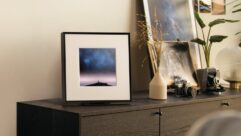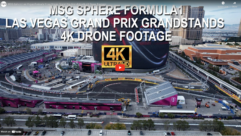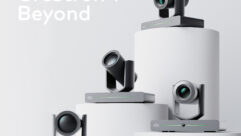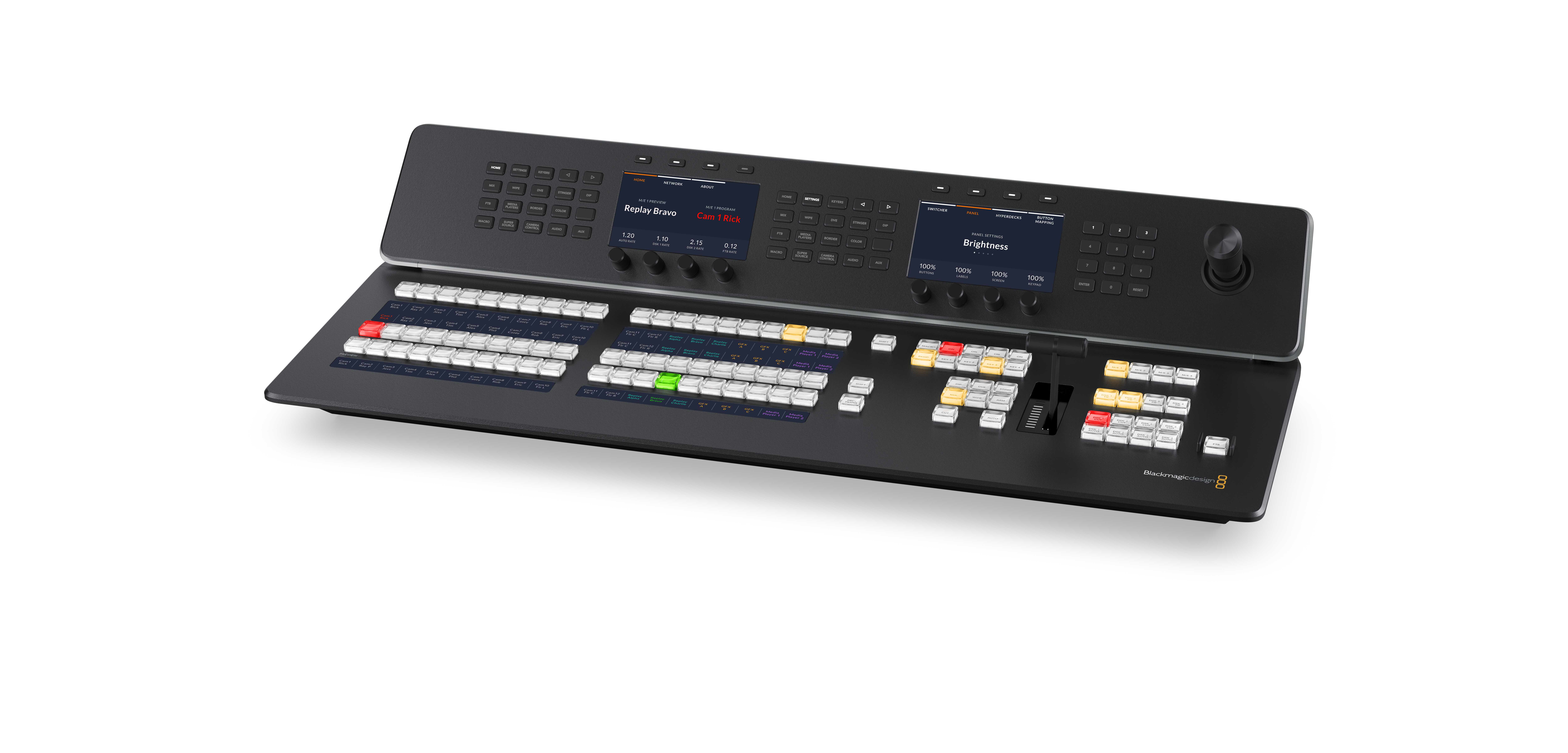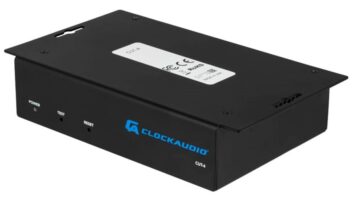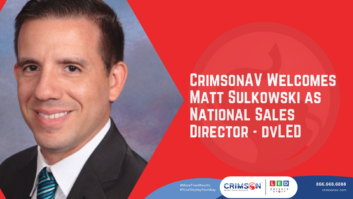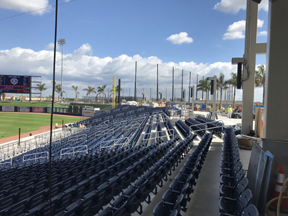
SVC Podcast – Show Notes – Show 177-1
In this edition of the SVC Podcast, Contributing Editor Bennett Liles talks with Ben Cating of Idibri about the new Ballpark of the Palm Beaches, spring training home of the Houston Astros and the Washington Nationals. Faced with a very hard deadline with the first game of the spring season, Ben tells the story of how all of the technology systems, sound, video, IT and security came together for a successful opening day.
TO GO TO PART 2 OF THIS PODCAST
Links of interest:
- Idibri, technology designers in Dallas
- Ballpark of the Palm Beaches, Spring training home of the Washington Nationals and the Houston Astros.
- Renkus-Heinz ICLive Generation 5 system for ballpark sound
Download Podcast Here:
https://s3.amazonaws.com/nb-svc/public/public/177-1_Idibri_Ballpark_of_t…
Transcript-
This is the SVC Podcast from Sound & Video Contractor Magazine with Ben Cating of Idibri. Show notes and equipment links for the podcast are on the web site of Sound & Video Contractor Magazine at svconline.com.
Play ball! Baseball season is here and there’s a new spring training field, Ballpark of the Palm Beaches. Spring season home to the Houston Astros and Washington Nationals, the field was outfitted from the ground up by Idibri for sound, video, data and communications. Ben Cating is going to tell us how all of that got done. That’s coming up next on the SVC Podcast.
Ben, it’s going to be good having you here with us for the SVC Podcast coming to us from Idibri in Dallas. Timely talk because it’s a brand new ballpark for spring training of the Houston Astros and the Washington Nationals. Very fancy looking place in West Palm Beach and Idibri handled all of the technology installation. Tell us about Idibri. What sort of projects do you handle?
Thanks for having me on, Bennett. I appreciate it. Yeah, we cover kind of a large variety of projects. Sports is something we do and we do a lot of it. And we also cover performing arts halls and houses of worship, education, some hospitality and corporate as well. We dabble in a little bit of all types of projects. [Timestamp: 1:29]
Got plenty going on then. You did sound, AV, data, IT and some security design. Since it’s all brand new you got right in at the beginning. So which part of it presented the most significant challenge? What was the toughest part?
You know, these all kind of had a little bit of challenging spots from time to time, but as you said we did all the technology, consulted for all the pieces of technology on the project. I think overall trying to coordinate all the data needs is becoming quite important. In all aspects of audio and video is integration of the data into all the systems, so getting all the systems to talk. And at the ballpark there’s essentially three entities. There’s the Nationals, the Astros and then the stadium itself. So there’s kind of three different owners, per se. And each of those entities have slightly different needs, however they all live on one large network. So kind of getting that network set up and partitioned on 30 or 50 VLANs for all the different needs was a little bit of a challenge. [Timestamp: 2:32]
Just that alone would have been a big job. Now, do they do other events there? I would think they haven’t yet.
Not yet. Yeah, they opened up spring training, so baseball was their primary. But it’s also going to be used for community Little League games and they also have some soccer field onsite as well, so some soccer tournaments that they’ll do. [Timestamp: 2:51]
Okay, so that’ll be a suitably busy place. How is the sound system set up? You did the sound on this, too. The speakers, amps, control.
Yeah. We kind of really focused on the main bowl for the higher-end system and it’s a Renkus-Heinz IC LIVE Generation 5 system. It’s kind of a steerable line array. And we chose that really for the look and the feel of that system and how you can set it in one place and digitally steer it down to the bowl. So it’s also very narrow, so we kind of located these on each column. And you’ll see in some of the pictures how those are mounted. So kind of a small footprint and steerable as well as a full outdoor rating. Since they are in Florida they’re going to be hit with hurricanes and full-blown rainstorms. So we wanted a full outdoor rating for the box. [Timestamp: 3:41]
Yeah, in that environment it’s got to be tough. I would think that speech intelligibility would be one of the big tuning factors on it since you probably get a lot of delayed bounce off of the stands and buildings surrounding the field.
Right. And it is a distributed system as opposed to kind of an outfield in-fire system where you’re kind of pointing the speakers at the people. We wanted more local coverage and a little more control over it, so we reduced that effect so we’re not pumping that much power out there. So we stay locally to each section of seating. [Timestamp: 4:11]
And on the data and IT part of it, you mentioned, is there Wi-Fi in there yet where the fans can watch the iso-cams and things?
No, currently not. So that was a decision based on some budget restraints that all the Wi-Fi is actually staff-facing. So it’s all private for the administration. And they’ve beefed up a little bit of the cell networks around the area so most of the fans are able to connect via the cell network and the Wi-Fi is for administration and the press use only. [Timestamp: 4:42]
Yeah, if I were having the fans come out I’d want them to be watching the game anyway instead of staring into their phones.
Right.
I know they have a lot of different communication requirements in there. They have to be able to get word all the way to the dugouts and all sorts of places so intercom, phones and all that?
Yep. So we also did your typical dugout phones to call the bullpen. So we handled that as well on the data side. There’s phones in all the offices and the administration areas. Again, for the three different entities that are onsite kind of three different systems. We’ve also got some hardline phones for emergency use. This is like a county emergency facility as well so there’s generator backups and there’s emergency shelters on place. If there’s a storm that hits they can kind of run a command post from this location as well. [Timestamp: 5:30]
And it’s all new so I figure you must have gotten an early start with the planning of this before they even began the actual construction.
Right. We were hired by HKS, the architect of record for the project. We were hired a couple of years ago. And so we’ve been in this since the early design stages before they started moving sand. [Timestamp: 5:47]
So you knew where they wanted to put video monitors, sound control, scoreboards and all that.
Right. We were part of that design process all the way through.
Where do they have the sound control? Is that in the same room with the video and broadcast control?
Correct. So this is a fairly simple ballpark and very clean. It’s about 6,000 seats. You’ve got the main bowl area with the main concourse and then you have suite level. And on that suite level you have two party decks, six suites, and the entire press box. So within that press box you’ve got radio booths and TV booths and also our scoreboard rack room/control room. So you have the front of house mixer there, you’ve got the PA announcer and spotter, and you’ve got controls for the video board. And then you’ve got the main rack room for the audio system as well. [Timestamp: 6:35]
That’s a lot of different places to get sound out to.
Right. Right.
What kind of mixer do they have in the control area?
It’s a Yamaha QL1. And that was kind of based on a list of needs as well as a little bit simple operation because they have multiple different users. Since there’s two ball teams there, depending on who is the home team, you may have a different crew in there working the room as well as off season you may have other users. So we wanted to try and make it as simple as possible. [Timestamp: 7:04]
Makes a lot of sense because you never know for sure who’s going to be operating everything after you’re done with it and everything’s installed.
Right.
It is interesting as to the people who do this once you’ve got it set up and they come in. How did that all go? Did you show them around and have to provide a lot of instruction for them or just sit them down and let them do their thing?
The group that was involved was Shark Productions and they’re local in the area. And they provide production for some other sports venues in the area so they’re fairly familiar with this type of gear. So it’s just a little bit on-boarding of how we set things up and how we configure things initially. And they were off to the run pretty quickly. [Timestamp: 7:40]
Okay. Well in Part 2 we’ll get into the video coaching system and the electrical situation. Ben, it’s been great having you with us to talk about the brand new Ballpark of the Palm Beaches, Spring training home of the Washington Nationals and the Houston Astros. Ben Cating of Idibri. Thanks for being with us.
All right. Thank you for having me.
Thanks joining us on the SVC Podcast. Show notes and equipment links are on the website of Sound & Video Contractor Magazine at svconline.com. Next week Ben will finish up with the ballpark’s club decks and the teams’ video coaching system designed and installed by Idibri. That’s all coming up next time on the SVC Podcast.


